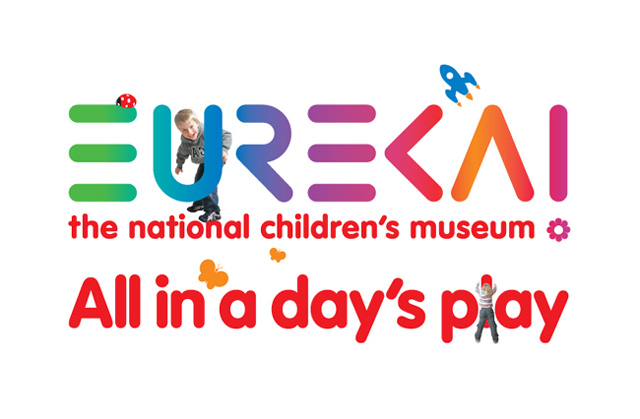What makes a Eureka! clown
Our clowns are childlike in their attention to things: everything is new and amazing - they explore every object to its full extent. They are imaginative and creative - everything can be anything to a clown - a shoe is a telephone, a scarf is a bridge, and even a flute is a stethoscope.
They are repetitive. They will try things out again and again, often to fail, over and over again; no matter how many times they see that banana skin, they will always slip on it.
Clowning is the most emotionally honest form of performance; they wear their hearts on their sleeves. Clowns laugh, cry, show their joy and despair through their very emotional facial expressions.
And, most importantly, a clown is a direct link to the audience. During a performance they break the fourth wall by acknowledging the audience, showing things to them and even getting audience members involved in their antics.
 |
Jill, Tasha and Ross discover something shocking!
|
Wearing the red nose
After our research and a few warm-up exercises we were given our red clowning noses. We were not to take these off as they were the prop that marked us as clowns.
Clowns are very silly - they are the subject of ridicule, and if we wished to be clowns we had to be silly. This was quite daunting for some of the group as they did not want to look like fools in front of their team leaders, colleagues and friends. In an attempt to break down everybody's inhibitions we were told to pick a space in the theatre. The music started, and we had to take to the stage as clowns, looking at the audience and fully exploring the stage (ignoring the other clowns at first). A variety of strange props were thrown into the spaces such as hats, wigs, instruments and toys. We had to work with these props, using them as something they weren't actually made for, which must have been quite a sight for the team leaders watching - grown adults wearing red noses, with wigs as shoes and recorders used as a splint for a poorly finger! We then had to interact with the other clowns, making up little scenarios, whilst looking at and involving the audience, emphasising our emotions and facial expressions.
 |
| Becky looks on in horror as Darren & Claire are stuck on the other side of the gorge! |
All restraint, inhibition and hesitation was now long gone and everyone was buzzing. We all had the techniques nailed and were in a great mood - making jokes, laughing along with everyone and offering ideas and suggestions to each other. As a final performance we were split into three teams of three, each given a scenario and asked to devise a performance: at first just improvising with the music, then structuring a beginning, middle and end. The three scenarios were:
- There is a massive gorge that the clowns want to cross, but there is no bridge.
- One clown is having a picnic when the other two appear, then one fly appears, followed by a swarm of insects attacking the clowns.
- One clown has an illness, and eventually the other two catch it.
 |
| Becca, Dan and Abi notice the first of many flies to come and ruin their picnic |
I was in group number 2, the picnic group. After a few run-throughs we decided that one clown should have the picnic all to himself, then the other two came but he would not share his picnic. The flies gradually appeared, one at a time, and the clowns began slapping themselves and each other in an attempt to get rid of the flies, which resulted in the picnic getting trodden on. Realising that the picnic had been ruined, the two clowns left the original clown alone with the remains of his picnic. By using a bit of slapstick, looking at the audience and exaggerating expressions we created a funny and successful 5 minute performance.
Bringing clowning into every day
After all three groups had performed we settled down and began to think about how we could incorporate the clowning ideas into museum life, such as:
- Using audience participation and acknowledgement during our science shows and workshops.
- Exaggerating our expressions and actions to make things more exciting to watch.
- Bring some of the playfulness into our time in the galleries - act as if everything is new to us, therefore more exciting for us and the children there who really are experiencing objects for the first time.
- Devising a clowning show which we enablers can perform on an Up To You hour or as an event for the public, where we can get families involved in creating their own clowning show based on everything we learnt during the training. This would be different from our existing 'Clowning Around' workshop, which is aimed at more traditional clowning with big costumes, facepaint and using props such as fake weights and rubber chickens.
 |
| The Eureka! Clowning School's first graduates! |
Our Clowning session has really given everyone involved such a boost to our ways of working, giving us new ideas and increased confidence in performing. We have loads of ideas about new things we can do in the galleries and ways to interact with kids - even the simplest of ideas such as putting on our red noses is full of potential for a better visitor experience.
Come and join us for a bit of Clowning Around in January 2012.
Come and join us for a bit of Clowning Around in January 2012.
Becca McAusland
Enabler and Exhibitions Assistant








